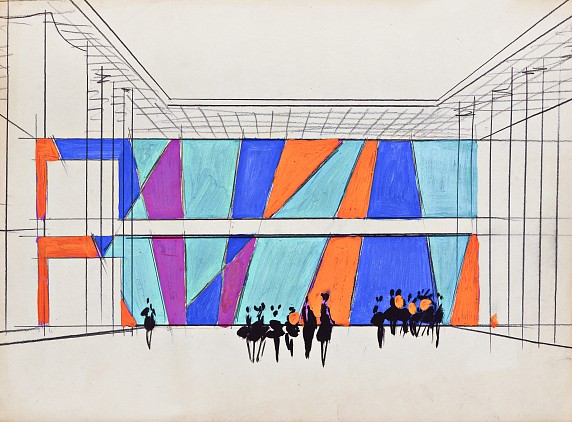Architect Vladimir Kubasov
The monographic exhibition is dedicated to the work of the Russian architect of the second half of the 20th - early 21st centuries - Vladimir Stepanovich Kubasov. His architectural practice, covering a huge period of time, absorbed neo-academicism of the post-war period, the international Thaw style, Soviet brutalism and postmodernism in its regional version. The desire to constantly update his artistic language allowed Kubasov to be among the pioneers of Soviet modernism, in the 1960s-1970s - to create his own architecture in the harsh conditions of standard construction, during the period of glasnost - to stand at the origins of modern Russian architecture, and in the 2010s - to return to his first masterpiece - the Palace of Pioneers and Schoolchildren on the Lenin (Sparrow) Hills - with the idea of implementing a project for its reconstruction.
The exhibition presents more than 250 items (author's graphics, photographs) from the collections of the Museum of Architecture. A.V. Shchusev, most of them are previously unpublished materials from Kubasov’s personal archive, which were donated to the Museum in 2022-2023 by the architect’s daughter in fulfillment of his will. These objects are being introduced into scientific circulation for the first time, and their appearance in the museum collection made it possible to create and present at the exhibition a complete creative biography of the master.
At the exhibition, the Museum presents the first scientific study of Kubasov’s creative method, which enabled the architect to adapt the formal features of Soviet modernism to his artistic style and form his own style in the 1960-1970s - the so-called “figurative modernism”. Works from this period are given a central place in the exhibition. Among them are completed buildings that are now iconic for Russian architecture: the building of the Moscow Art Theater named after. M. Gorky in Moscow (1964-1973), the building of the river station in Rostov-on-Don (1968-1976), as well as unrealized projects that were created by Kubasov for various competitions.
A separate thematic block of the exhibition is dedicated to the period of Kubasov’s work on the World Trade Center on Krasnopresnenskaya Embankment in Moscow (1974–1980) - the first modern multifunctional business center in the Soviet Union, built in collaboration with American architects. Of particular interest are the numerous sketches, shown for the first time at the exhibition, created by the architect in the 2000s for the second phase of construction of the complex, including a series of drawings made by Kubasov in New York during business trips in the mid-1970s.
Research work during the preparation of the exhibition project allowed the curators to show in the exhibition not only well-studied monuments, but also little-known projects of the architect. Thus, it is the postmodern period of Kubasov’s work that allows us to see the origins of modern domestic architecture from a new perspective.
